Reviews
Nicholas Ray
USA, 1956
Credits
Review by Andrew Schenker
Posted on 30 August 2008
Source Gaumont DVD (R2)
Categories The Mystic: The Films of Nicholas Ray
In Hot Blood, the film’s Los Angeles gypsy community may be marked by insistent patriarchal attitudes, but they weren’t counting on Jane Russell. As the male figures aim to dictate the terms of the colony’s life, Russell’s character, Anne Caldish, attempts to work out her own place in the community and, with the exception of the tacked-on reconciliation between her and her husband at the film’s end, repeatedly thwarts any attempt by the male authority figures to force her into undesired roles. Still, for all the film’s concerns with the structures of patriarchy, director Nicholas Ray seems less interested in teasing out all the thematic implications of Jesse Lasky Jr.’s screenplay and more concerned with staging a glorious Technicolor extravaganza, delighting in arranging his characters and their variegated costuming across the ‘Scope screen and even staging several dance numbers. Still, if it’s difficult to argue with the results from an aesthetic standpoint, this shift in focus on Ray’s part nonetheless makes the question of constructing a coherent reading of the film somewhat problematic.
Presiding over the gypsy community in Hot Blood is the King, a weary, terminally ill paterfamilias who takes on the entire community as his burden, bailing his charges out of jail, looking after their well-being, but also enacting the oppressive structures that constitute gypsy law and funneling money from community donations into his dream-RV purchase. After everything’s come to light, the film’s characters insist on the King’s beneficence, his misappropriation of funds indulgently overlooked and the fundamental correctness of the community’s structures upheld. But at least on this last point, the rest of the film suggests otherwise. The narrative crisis begins when the King decides to arrange a marriage for his brother, the half-assimilated Stephano Torino, who wants nothing more than to cavort with blondes and take a job as a dance instructor. But the King has big plans for Stephano; upon his death, his brother will take over the leadership but, in order to do so, Stephano must secure a good gypsy wife. Enter Anne Caldish, fresh from Chicago, and bait in her father’s perpetual ruse in which he arranges her marriage to an unsuspecting groom, has her fake an illness at the altar (thus nullifying the nuptials) and then runs off to another town with the dowry. When Stephano learns of the ruse before the marriage, he agrees to go along with it, taking a cut of the money for his part. But, tired of her role, Anne breaks the agreement made by the men, fails to feign sick, and to the horror of both Stephano and her father ends up going through with the marriage.
From here, the film establishes a power struggle between the unwitting groom and the new bride. As Anne determines to win her new husband over, Stephano resolves to refuse his wife his husbandly duties (not easy considering the seductive aspect presented by Russell), the film boldly asserting Anne as a fully sexualized woman and one who is every bit as desirous of sexual satisfaction as a man. The struggle is first enacted visually at the wedding ceremony in one of the film’s bravura dance numbers. As Anne moves about the floor, Stephano picks up a whip and joins her. After knocking off her veil, he then begins coiling the whip around her person, ensnaring her in a husbandly embrace while Anne attempts to free herself, a visual analogue of the community’s mores. Finally, the two retire to the marriage bed where instead of romantic consummation, they end up in physical confrontation while revelers outside sing a gypsy marriage song with its telling refrain, “obey your husband all your life.” It’s hard not to read an essential relationship between the attitudes represented through the song and the result of unions conceived under such attitudes. The arranged marriage (brokered exclusively by the men of the community) creates a toxic environment for both partners, while Anne’s ambivalent attitude towards the dictate to “obey [her] husband” (which she uses, despite its charge of female passivity, as a means of asserting control over her husband) further calls into question the effectiveness of such artificially conceived nuptials.
Fleeing Los Angeles, Stephano takes a gig as a traveling dance instructor only to eventually return home, burning with a newfound desire for his wife. But a misunderstanding involving a sleep potion (Anne drinks it instead of Stephano) prevents the successful reintegration of the husband into his family and Anne finally resolves to have the marriage annulled. At this point the film becomes somewhat difficult to read in terms of representing a coherent attitude towards the organizing structures of the gypsy colony; as Anne moves from a desire to win over her husband to a rejection of her marriage, she seems to making a final assertion of her independence from the community’s institutions, even refusing her husband access to the marriage bed. But by having the concluding action turn on a misunderstanding - Anne’s unwitting drinking of the potion - the film deprives Anne of much of her volition in her refusal of her prodigal husband and leaves open the possibility of reconciliation, and so it’s no surprise when the Ray seizes on this last option. Following the successful annulment of the marriage (which, as Anne is told, makes her a “second-class woman”, a final reminder of the power of the patriarchal community to control its women), Stephano runs off after his ex-wife and wins her back in just seconds. Despite some vague hints at the possibility of founding their union on a new basis, everything about the film suggests that the union will result in another unequal relationship, the husband ruling and the wife earning him a living through fortune telling and thievery. In one sense, this may be what Anne desired all along (after all, her initial goal was to secure her husband in a working marriage), but given the fierce resistance she had shown towards the decisions of the community’s male leaders throughout the film (and the sassy insolence of Jane Russell’s performance), this ending has to be read as an at least partial rejection of the film’s bolder claims about patriarchal oppression. Still, what’s ultimately most important is the deft way in which the film raises these claims in the first place.
More The Mystic: The Films of Nicholas Ray
-
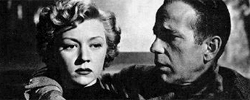
In A Lonely Place
1950 -
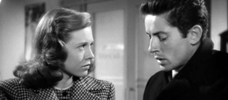
They Live By Night
1948 -
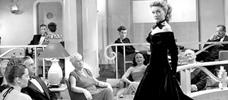
A Woman’s Secret
1949 -
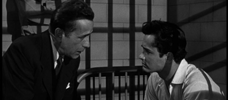
Knock on Any Door
1949 -

Born to Be Bad
1950 -
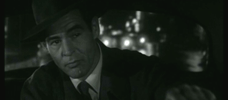
On Dangerous Ground
1952 -
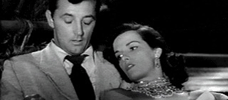
Macao
1952 -
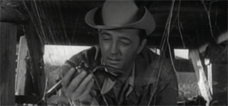
The Lusty Men
1952 -

Johnny Guitar
1954 -

High Green Wall
1954 -

Rebel Without a Cause
1955 -

Bigger Than Life
1956 -

Hot Blood
1956 -

The True Story of Jesse James
1957 -
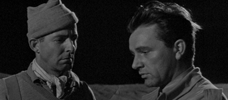
Bitter Victory
1957 -

Party Girl
1958 -

King of Kings
1961 -

55 Days at Peking
1963 -

The Janitor
1974 -

We Can’t Go Home Again
1973-1976 -

Lightning Over Water
1980
We don’t do comments anymore, but you may contact us here or find us on Twitter or Facebook.



